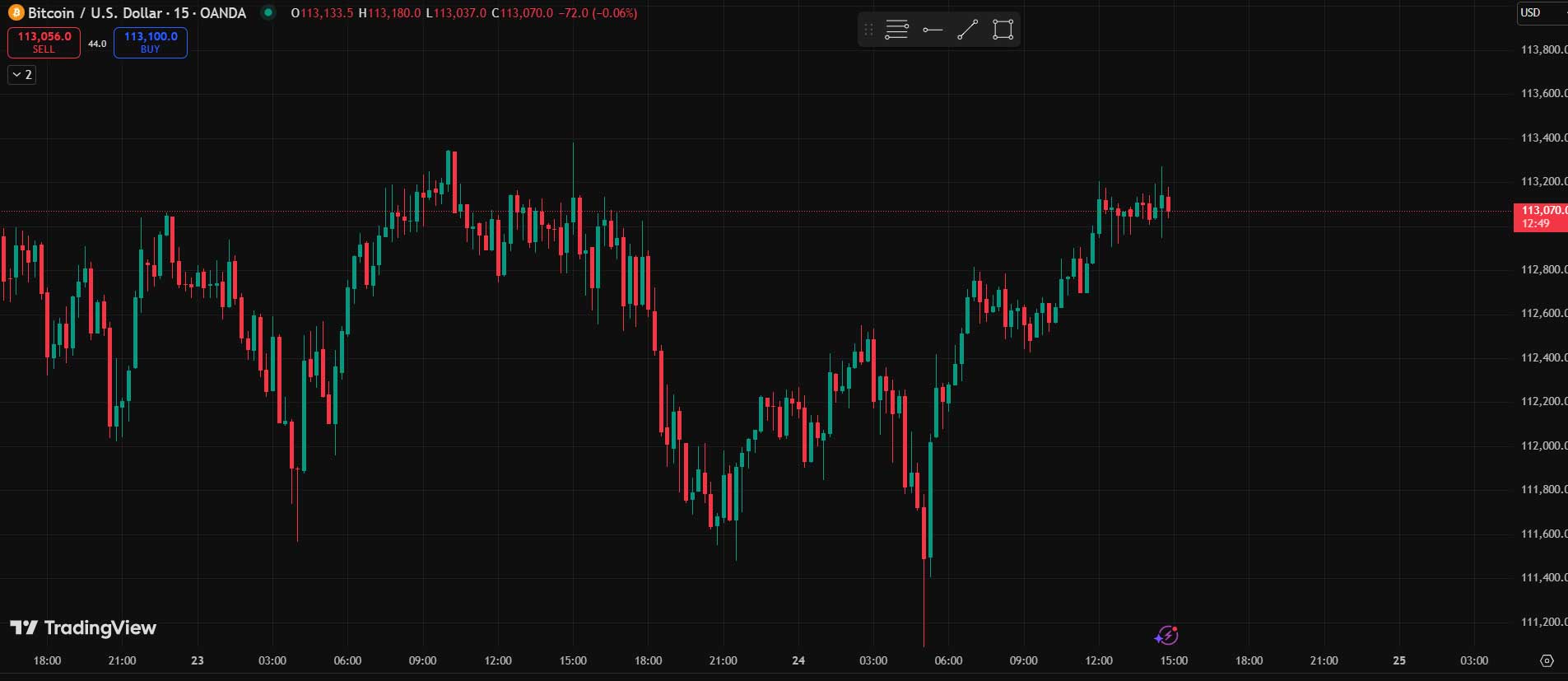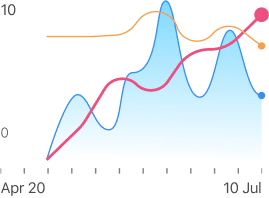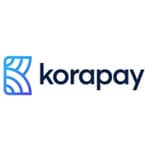- Giao dịch
Brokerage Accounts
Trading Services and Programs
- Funded Trading
- TenAcademy
- Partners
Đối tác
- Company
Who is Tentrade?
 MenuMenu
MenuMenu

With everything in our lives becoming digital, it was only logical that money would also take the same path. Money, and the way we use it, evolved from coins and banknotes to cards and mobile apps through the years and now the latest upgrade is the use of cryptocurrencies.
Cryptocurrencies first came into our lives with the introduction of Bitcoin in 2009, on the back of the global financial crisis. It became the new way of transferring money without the need for banks and governments. Now, crypto is a global financial market worth trillions of dollars, with thousands of coins and tokens available.
What exactly is cryptocurrency, how can you trade this digital currency, and what are the benefits of doing so?
Read through this beginner friend guide to find out

Cryptocurrency is a type of digital money that is created, stored, and exchanged online using secure technology called blockchain.Unlike traditional money, it does not rely on banks or central authorities, making it decentralised and accessible worldwide.
The first and most well-known cryptocurrency, Bitcoin, was created in 2009 as an alternative to the traditional financial system. Since then, thousands of other cryptocurrencies – such as Ethereum, Ripple, and Litecoin – have emerged. Each type of cryptocurrency offers unique features and uses for traders and investors, giving them a wide variety to choose from.
The main features of cryptocurrencies is that they allow people to send, receive, and store value online in a way that is fast, secure, and transparent. For traders, it also represents one of the most exciting asset classes in modern finance. Its high volatility, 24/7 market hours, and global accessibility provide opportunities for both short-term speculation and long-term portfolio diversification.
At the heart of every cryptocurrency lies a technology called blockchain. Think about it as a digital ledger, where a record of translations are stored and shared across a network of computers. When cryptocurrencies are brought or sold, these transactions are done through the blockchain. Once this process – called mining – is complete, it is permanent and cannot be altered or removed, which makes the system secure and transparent.
At the heart of every cryptocurrency lies a technology called blockchain. Think about it as a digital ledger, where a record of translations are stored and shared across a network of computers. When cryptocurrencies are brought or sold, these transactions are done through the blockchain. Once this process – called mining – is complete, it is permanent and cannot be altered or removed, which makes the system secure and transparent.
Cryptocurrency trading involves speculating on the price movements
of digital currencies and trading depending on your speculations.
There are two main ways to trade cryptocurrencies:


This is the direct buying and selling of cryptocurrencies on an exchange.
For example, you can buy Bitcoin, hold it in your digital wallet, and later sell it when the price goes up.
With CFDs, you don’t actually own the cryptocurrency. Instead, you trade on the price movements. This allows you to profit from both rising and falling markets, and often with leverage, but it also carries higher risk.
Both are leveraged products, which means you only need to deposit a small amount—called margin—to gain full exposure to the underlying market. Your profit or loss is still calculated on the full size of the position, so leverage increases both potential gains and potential losses.
Unlike traditional markets that close at the end of the day, crypto markets are open 24/7, giving traders the flexibility to trade at any time. This constant availability, combined with high volatility, makes crypto trading one of the most dynamic opportunities in modern finance.
Cryptocurrency markets operate much like traditional financial markets, but with 24/7 global access and digital-only assets. Traders buy and sell cryptocurrencies like Bitcoin, Ethereum, and others through online exchanges, aiming to profit from price movements. Prices are determined by supply and demand, market sentiment, and external factors such as regulation, technological updates, or macroeconomic trends.
Cryptocurrency trading offers several advantages that make it appealing to both beginners and experienced traders:
Crypto prices can fluctuate significantly in short periods, creating opportunities for traders to profit from both rising and falling markets.

Anyone with an internet connection can trade cryptocurrencies, making it a truly borderless market.

Unlike traditional markets, cryptocurrency markets never close. This gives you the flexibility to trade anytime, no matter your schedule.


Cryptocurrencies offer an alternative asset class for investors looking to diversify their portfolio beyond stocks, bonds, or commodities.
With the continuous development of blockchain technology and new crypto projects, trading allows you to be part of a rapidly evolving financial ecosystem.

Starting your crypto trading journey may seem daunting, but with a step-by-step approach, it can be manageable:
Learn about cryptocurrencies, blockchain technology, and trading basics. Understanding concepts like wallets, exchanges, and market orders is essential.
Select a reputable crypto exchange or CFD platform that offers security, a user-friendly interface, and a variety of trading pairs.
If you plan to buy and hold cryptocurrencies, you’ll need a secure digital wallet to store your assets safely.
Begin with a small investment while you learn the market dynamics. This helps minimise risk while gaining experience.
Decide whether you want to trade short-term (day trading, swing trading) or invest long-term. Use tools like stop-loss orders and risk management techniques to protect your capital.
Cryptocurrency markets are affected by news, regulation changes, and technology updates. Following reliable news sources and market analysis is crucial.
Decide whether you want to trade short-term (day trading, swing trading) or invest long-term. Use tools like stop-loss orders and risk management techniques to protect your capital.
Cryptocurrency trading offers a dynamic way to participate in a global financial market. By understanding the basics, starting small, and following a clear strategy, beginners can trade responsibly while exploring the opportunities crypto offers. With discipline and learning, anyone can take their first steps into this exciting world.
Bitcoin (BTC) is the first and most well-known cryptocurrency, created in 2009. It allows people to send and receive digital money without relying on banks or central authorities. Bitcoin is often seen as digital gold due to its limited supply and store-of-value characteristics.
Ethereum (ETH) is a cryptocurrency and a platform for decentralised applications (dApps). Unlike Bitcoin, Ethereum allows developers to create smart contracts – self-executing agreements that run on its blockchain – making it more versatile for different use cases.
Yes! Beginners can start trading by educating themselves, choosing a reputable exchange or CFD platform, starting with small investments, and following a clear trading strategy. Using demo accounts and practicing risk management also helps build confidence.
A memecoin is a cryptocurrency inspired by internet memes or popular culture, often created for fun or community engagement. Examples include Dogecoin (DOGE) and Shiba Inu (SHIB). While some memecoins gain popularity, they are usually highly volatile and speculative.
Network congestion occurs when too many transactions are submitted to a blockchain at once, slowing down processing times and increasing transaction fees. It’s like a traffic jam in the network where miners have to prioritise which transactions to include in blocks.
Block reward: The number of new bitcoins a miner earns for adding a block to the blockchain. This reward halves approximately every four years.
Block size: The maximum amount of transaction data a block can contain. Larger blocks can process more transactions at once.
Block time: The average time it takes to create a new block. For Bitcoin, this is roughly 10 minutes.
Miners validate and record transactions on a blockchain by solving complex mathematical problems. This process, called mining, secures the network and ensures transactions are legitimate. In return, miners earn cryptocurrency rewards and transaction fees.









MIỄN TRỪ TRÁCH NHIỆM CFDs thường là các sản phẩm có đòn bẩy. Giao dịch OTC cho sản phẩm CFD gồm hàng hóa, ngoại hối, chỉ số và cổ phiếu,có mức độ rủi ro cao và có thể dẫn đến mất tất cả khoản đầu tư của bạn. Do đó, CFD có thể không phù hợp với tất cả các nhà đầu tư. Bạn không nên đầu tư số tiền mà bạn không chấp nhận bị thua lỗ. Trước khi quyết định giao dịch, bạn nên biết tất cả các rủi ro liên quan đến giao dịch OTC CFD và tìm lời khuyên từ một cố vấn tài chính độc lập và được cấp phép phù hợp.Hiệu suất trong quá khứ không phải là một chỉ số đáng tin cậy về kết quả trong tương lai. Các dự báo trong tương lai không phải là một chỉ báo đáng tin cậy về hiệu suất trong tương lai. Thông tin chung và / hoặc các khuyến nghị do Công ty cung cấp không nên được hiểu là lời khuyên đầu tư. Để biết thêm thông tin, vui lòng truy cập Chính sách Tiết lộ Rủi ro Chung của chúng tôi.
Disclaimer: Information on this site is not directed at residents in any country or jurisdiction where such distribution or use would be contrary to local law or regulation
TenTrade is a brand name of Evalanch Ltd (hereinafter the “Company”) which is Licensed and regulated by the Seychelles Financial Services Authority with license number SD082.
Evalanch Ltd, with registration number 8429760-1, has its office registered at CT House, Office 9A, Providence, Mahe, Seychelles

Copyright ©2025 TenTrade. All rights reserved.